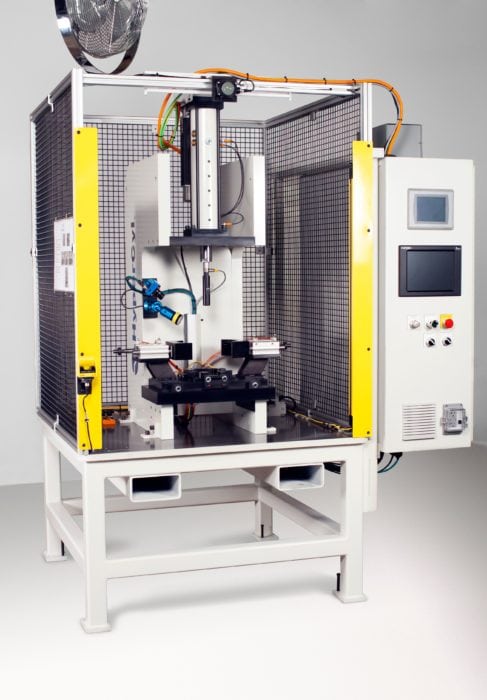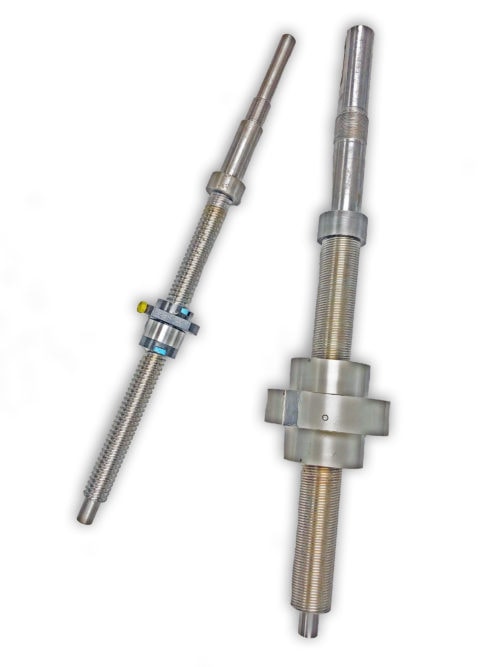What Is a Linear Actuator?
Comments Off on What Is a Linear Actuator?
To differentiate between linear or rotary actuators, consider their motion profile. In the case of linear actuators, they generate push or pull movement along a straight line through rotary motion. Different types of linear actuators utilize energy sources such as electricity, pressurized hydraulic fluid, and compressed air or gas to power the motor that creates that rotary motion.
Operators have control over the speed of actuator movement, ensuring safe and efficient processing with high repeatability and positioning precision. Industries from aerospace and defense to agriculture and food and beverage make use of linear actuators for their cost-effectiveness and versatility in wide-ranging automation applications.
Different Types of Linear Actuators
To best suit the needs of these varied industries, engineers have developed three main types of actuators: mechanical/electromechanical, hydraulic, and pneumatic.
Mechanical and Electromechanical Linear Actuators
An external force activates a mechanical linear actuator, and an internal force for electromechanical linear actuators, but both derive linear motion by converting rotary motion. A motor such as a servo, a stepper, or a gearmotor utilizing AC or DC power typically fuels electromechanical linear actuators. Among electromechanical actuators, you’ll frequently find ball-screw, roller-screw (also known as planetary screws), or lead-screw designs. All three contain a rotating nut that moves linearly along a screw shaft. Using these actuators can provide more control over distance and force, though they are typically more expensive than other types.
Hydraulic Linear Actuators
Rather than an electric signal or manual motion, hydraulic linear actuators gain power from oil or other pressurized hydraulic fluid. You’ll find these in operation in machines and equipment situated in rugged environments and terrain, such as construction sites or mining excavations. Hydraulic linear actuators are ideal for high-force and high-power applications, especially where you require shock load capacity and consistent pressure. However, these actuators need a lot of power, often suffer from leakages, and are quite noisy. You can also damage hydraulic actuators if you operate them at high temperatures, and they require added parts for full functionality.
Pneumatic Linear Actuators
Pneumatic linear actuators convert compressed air or gas energy to produce straight motion. Speed and cost are the primary benefits of these actuators. They’re reliable and effective for applications that require the rate of linear motion in objects to be up to 60 inches per second. However, you’ll also need a compressor, which generates noise during operation, and pressure losses disqualify these actuators from applications needing absolute movement precision.
Features of Linear Actuators
Linear actuators have enjoyed widespread usage because of their reliability and versatility. Actuators pair with various power sources and come in numerous design configurations, such as screw, rod, or belt type, that provide the requisite force, precision, and acceleration/deceleration speed for multiple applications.
Requiring very little operator maintenance, actuators can have a long working life. You can deploy them in harsh environments, and they still provide high repetition, accurate positioning, and precision movements. Depending on the type you use, linear actuators can also be quite compact.
Industries and Applications for Linear Actuators
You will find linear actuators in many industries. Some of the most common are:
- Aerospace
- Agriculture
- Automotive
- Clean and renewable energy
- Food and beverage
- HVAC
- Marine
- Military
- Packaging
- Pharmaceutical
- Robotics
Actuators are critical components in many processes within these industries. For example, actuators capture and harness solar, tidal, and wind energy to power equipment and buildings. You can find them in automotive features ranging from power liftgates to sunroofs. Tanks use actuators to elevate their weapons systems. Also, factories in numerous industrial sectors use actuators to operate conveyor belts, robots, and other automated equipment.
High-Quality Linear Actuators From HyperCyl
For reliable, precision linear servo actuators for industrial processes or finished goods, Aries Engineering Company, Inc. and HyperCyl systems have what you need. Serving a diverse customer base in industries such as automotive, medical, and aerospace, AEC/HyperCyl provides both Ball Screw and Roller Screw actuators with superior performance in real-world assembly and forming applications, as well as our Application Test Lab for potential assembly evaluation.
Leveraging our expert engineers, product knowledge, and customer feedback, we ensure that HyperCyl fabricates electromechanical, hydraulic, and pneumatic linear actuator systems to meet the highest quality standards. To find out more about our actuator solutions, contact us or request a quote today.
Ball Screw Actuators vs. Roller Screw Actuators
Comments Off on Ball Screw Actuators vs. Roller Screw Actuators
Actuators are mechanical devices that convert energy into motion. These components are incorporated into a wide variety of products, from industrial equipment to household electronics. The energy source of an actuator can be electric, hydraulic, or pneumatic power.
High-quality, heavy-duty actuators are critical for industrial operations, where they are responsible for facilitating linear and rotary motion to convey materials and operate equipment. For heavy-duty operations, ball screw actuators and roller screw actuators are ideal. We will explain the characteristics, benefits, and differences between ball screw and roller screw actuators so you can choose the one that best suits your needs.
Ball Screw Actuators
Ball screw actuators convert rotary motion to linear motion. They feature a nut mounted on a grooved screw shaft. Inside the nut, recirculating balls roll within the groves of the screw shaft. As the screw turns, the nut moves up and down the shaft along the grooves, creating linear motion that can be finely controlled by turning the screw. Ball screw actuators provide precise control for medium-duty to heavy load-bearing applications and can accommodate high-speed processes.
Ball Screw Applications
Ball screw actuators provide smooth, energy-efficient motion with exceptional accuracy and precision control. They offer continuous high-speed, high-force movement for long periods of time. These benefits make ball screws ideal for:
- Sawmills
- Wind turbines
- Solar panels
- Vehicle power steering
- Assembly equipment
Roller Screw Actuators
Roller screws have a similar construction to ball screws, but instead of recirculating balls, they contain rollers that are threaded to match the threads on the main screw shaft. Since the rollers do not touch each other, they do not interfere with each other’s motion and can operate significantly faster than ball screws. The individual rollers have greater surface area contact with the main shaft than recirculating balls, so they have higher axial load characteristics, higher dynamic load capabilities and thus longer life than comparable ball screws. They also generate more heat and require more lubrication at tighter intervals.
Roller Screw Applications
Roller screws can withstand high force and repetitive motions for long periods of time. They can be controlled with a high degree of precision, and their extensive surface area provides additional stress dispersion in high-force applications, such as:
- Automotive and aerospace manufacturing
- Metal casting and molding
- Paint spraying
- Pressing, inserting, and riveting
- Precision CNC machining
- Automated, high-speed manufacturing equipment
Which Actuator Is Right for You?
Ball and roller screws each offer unique advantages for different applications. To determine which actuator is ideal for your needs, consider the following:
- Operational Life: In general, roller screws have a longer service life and offer good ROI when operated for extended periods of time. For projects lasting less than three years, ball screws are highly effective and make an excellent investment. Depending on the budget and length of your project, ball screws may be ideal for short-term, low-budget projects, while roller screws would be better for long-term applications.
- Expected Force: Longevity is greatly affected by the amount of force exerted. Roller screws are better than ball screws for heavy loads over eight tons. For applications with lower load capacity, balls screws represent an excellent low-cost option.
- Maintenance Frequency: Due to the amount of friction and heat they generate, roller screws often require more lubricant and maintenance than ball screws, especially in high-speed operations. Both types of actuators operate best with sufficient lubrication and regular preventative maintenance.
- Contact Area: Due to the lack of contact between rollers and the bearing, roller screws transmit more force more quickly. Ball screws must make contact between balls and the bearing, so this can interfere with ball motion, reducing efficiency and increasing wear on the actuator elements.
- Cost: Ball screw actuators are significantly less expensive to obtain, maintain, and repair. Components are readily available open-market, and their simple design makes them easy to fix. Roller screws, on the other hand, are more complex and contain more specialized components, which makes parts harder to source and more expensive to repair or replace.
Request a Quote on Quality Actuators from HyperCyl
HyperCyl is a leading developer and manufacturer of cutting-edge assembly and forming technology. We offer a selection of ball screw, roller screw, and other actuator designs to meet the needs of demanding applications in the commercial, manufacturing, defense, and automation industries. To learn more about our innovative motion solutions, contact us today or request a quote!
